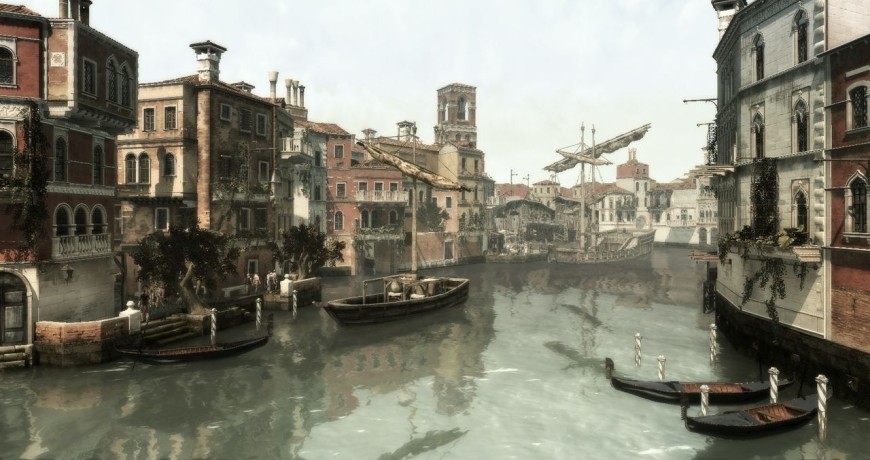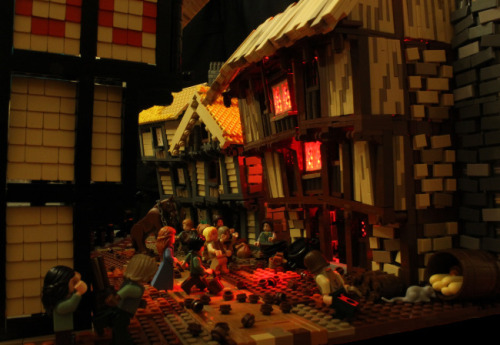If you want to hear the speech anyway, here's a link to Henry V:
Elizabethan London
Tyburn was an infamous execution spot west of London, used since medieval times. The Tyburn "tree" - a unique, multi-person gallows - erected in 1571 became a popular public spectacle, drawing crowds of thousands.Tyburn Tree blog is less blood-thirsty but hopefully topical, interesting and informative, if slightly bent to my personal topics of interest - books, writing, history, technology, with a smattering of politics and dash of pop culture, science and the downright strange. So "take a ride to Tyburn" and see what happens...
Friday, November 22, 2013
We few, we happy few...
Not sure if this is cool...or just extremely weird. I present to you, the Lego Battle of Agincourt, alas, sans HenryV's stirring speech.
Friday, November 15, 2013
Immersive Worlds
I tend to play video games like a tourist.
I like to poke about in corners, gawp at scenery, landscapes & vistas and explore to the point of neglecting the gameplay. For some reason, the space unknown tends to pull me along relentlessly.
I recently tried out my son's copy of GTA V recently, and ended up stealing a jetski and spending most of the next hour cruising the coast before abandoning it to clamber up the mountains.
Game engines, the technology that supports the development of an immersive world environment, have evolved into truely astonishing tools.
Crytek's CryEngine, used to create futuristic shooter games, was recently repurposed by the British Library and GameCity for an Off The Map competitive project. The winner was Pudding Lane Productions from De Monfort University who created a astonishing representation of 17th century London from before the London Fire of 1666, based on maps and British Library data. Check out the video showcased below:
As someone with a interest in history, the ability to roam an immersive historical environment makes certain games is incredibly attractive. Games like the Assassin's Creed series allow you to roam an 3-D representation of 15th century Florence, Venice and Rome.
Other games let you wander a fictionalized version of New York or Los Angeles, or meander through the late 19th century Mexican frontier. The freedom to explore and the lure of immersive gameplay are what stands out, making these games and game environment a striking contrast to many games that funnel you through a experience "on rails", with no options to strike out, explore or engage the gamescape on your own terms.
 Games like Red Dead Redemption, Assassin's Creed and Skyrim provide you with a vast world, and a myriad set of directions, quests and options for the player to make of what they will. You can follow the character's journey in Red Dead Redemption, or just enjoy the thrill of topping out over a desert rise at sunset and watching a thunderstorm chasing away in the distance.
Games like Red Dead Redemption, Assassin's Creed and Skyrim provide you with a vast world, and a myriad set of directions, quests and options for the player to make of what they will. You can follow the character's journey in Red Dead Redemption, or just enjoy the thrill of topping out over a desert rise at sunset and watching a thunderstorm chasing away in the distance.

The next time you see your kid playing a video game, stop and take a look beyond the mayhem, at the world they are careening about it.
You might be surprised at what you find.
I like to poke about in corners, gawp at scenery, landscapes & vistas and explore to the point of neglecting the gameplay. For some reason, the space unknown tends to pull me along relentlessly.
I recently tried out my son's copy of GTA V recently, and ended up stealing a jetski and spending most of the next hour cruising the coast before abandoning it to clamber up the mountains.
Game engines, the technology that supports the development of an immersive world environment, have evolved into truely astonishing tools.
Crytek's CryEngine, used to create futuristic shooter games, was recently repurposed by the British Library and GameCity for an Off The Map competitive project. The winner was Pudding Lane Productions from De Monfort University who created a astonishing representation of 17th century London from before the London Fire of 1666, based on maps and British Library data. Check out the video showcased below:
As someone with a interest in history, the ability to roam an immersive historical environment makes certain games is incredibly attractive. Games like the Assassin's Creed series allow you to roam an 3-D representation of 15th century Florence, Venice and Rome.
Other games let you wander a fictionalized version of New York or Los Angeles, or meander through the late 19th century Mexican frontier. The freedom to explore and the lure of immersive gameplay are what stands out, making these games and game environment a striking contrast to many games that funnel you through a experience "on rails", with no options to strike out, explore or engage the gamescape on your own terms.
 Games like Red Dead Redemption, Assassin's Creed and Skyrim provide you with a vast world, and a myriad set of directions, quests and options for the player to make of what they will. You can follow the character's journey in Red Dead Redemption, or just enjoy the thrill of topping out over a desert rise at sunset and watching a thunderstorm chasing away in the distance.
Games like Red Dead Redemption, Assassin's Creed and Skyrim provide you with a vast world, and a myriad set of directions, quests and options for the player to make of what they will. You can follow the character's journey in Red Dead Redemption, or just enjoy the thrill of topping out over a desert rise at sunset and watching a thunderstorm chasing away in the distance.
The next time you see your kid playing a video game, stop and take a look beyond the mayhem, at the world they are careening about it.
You might be surprised at what you find.

Labels:
History,
Travel,
video games
Sunday, November 10, 2013
Subscribe to:
Comments (Atom)



